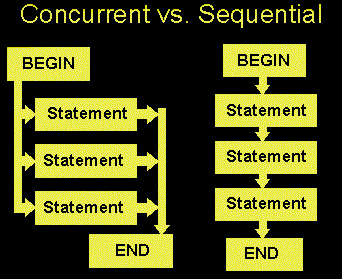Perhaps the most obvious way to understand concurrent programming is to compare it to sequential programming. While a sequential program is in one place at a time, in a concurrent program, different components are in independent, or semi-independent, states. This means that components in different states can be executed independently, and therefore at the same time (as the execution of one component does not depend on the result of another). The following diagram illustrates the basic differences between these two types:

One immediate advantage of concurrency ...

